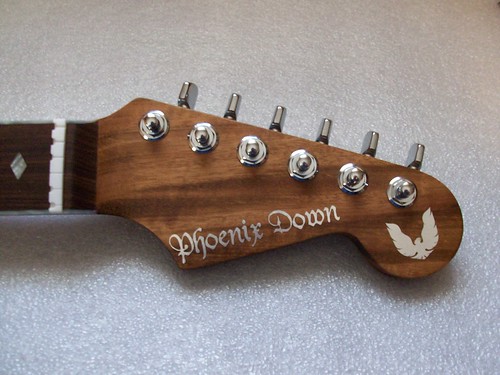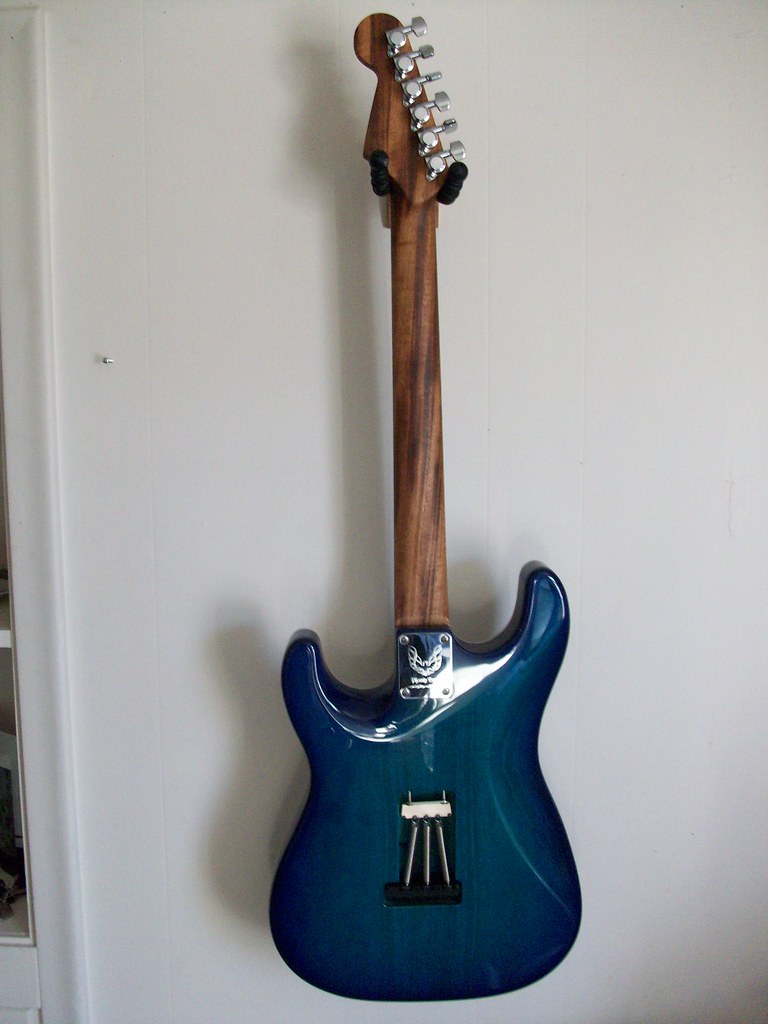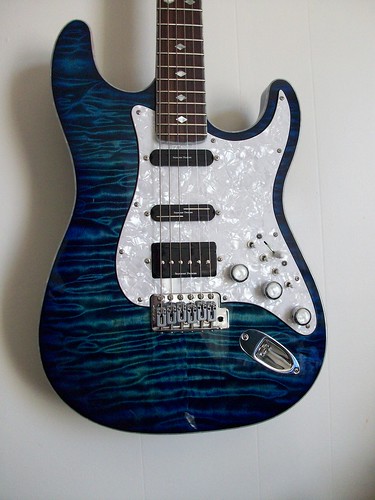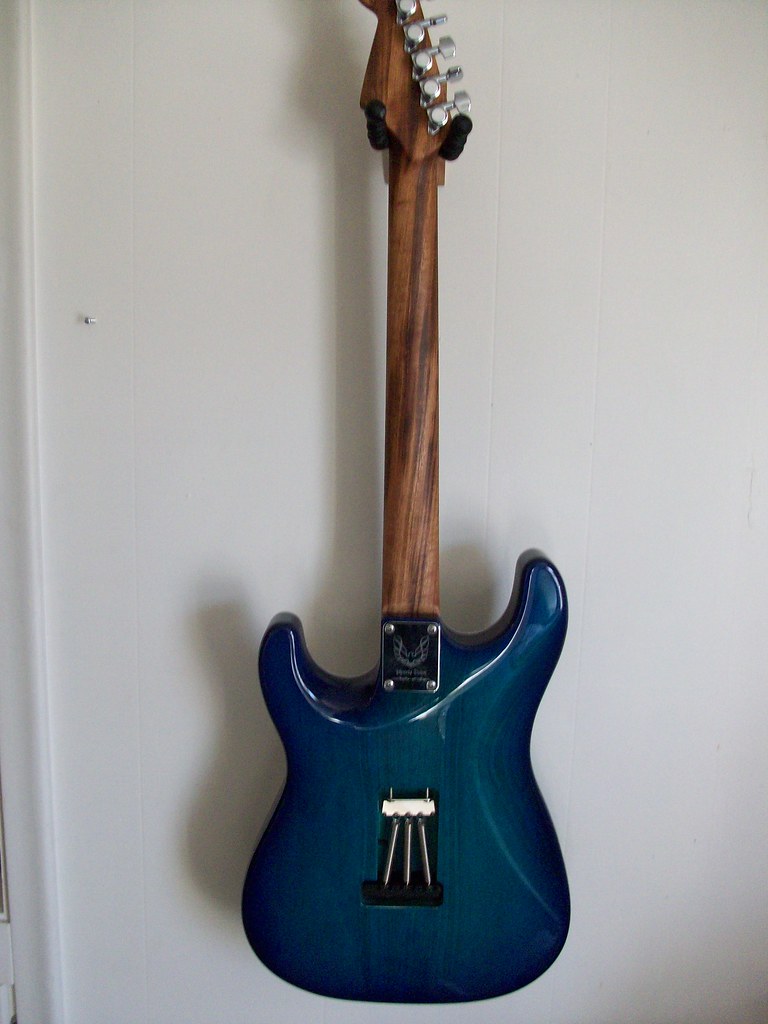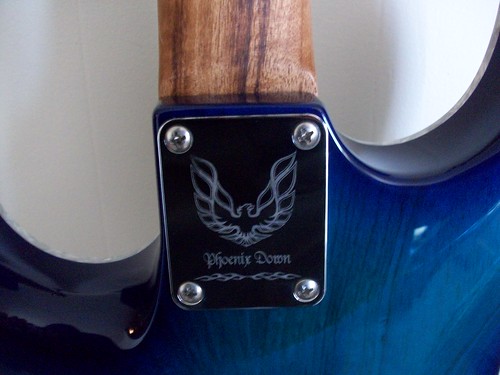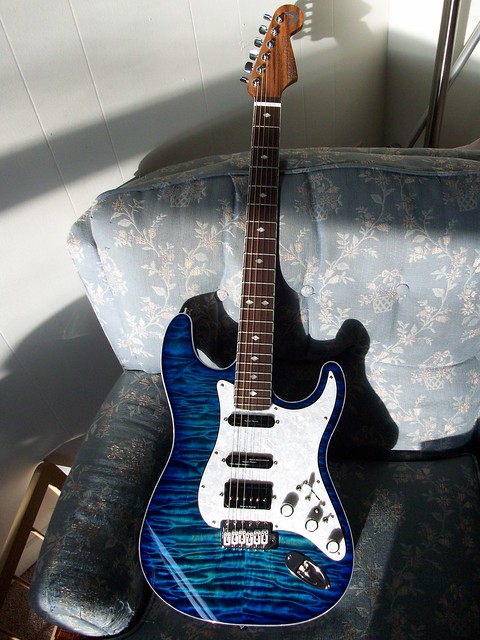Firebird211
Hero Member
- Messages
- 734

Soundclip Samples
http://www.mediafire.com/?ujo7djdfad81l

Mockup
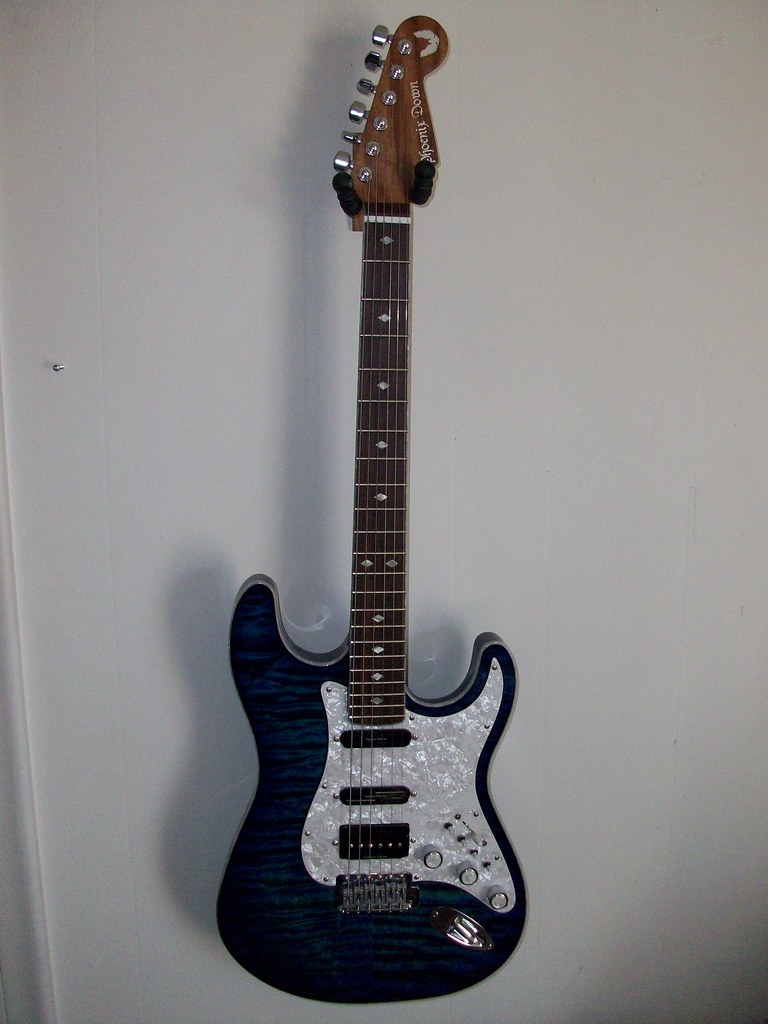
Guitar
Guitar Specs:
Swamp ash body, chambered, quilt maple top, blue burst front and back, pearloid binding.
Warmoth Pro / Compound Radius, Standard Thin.
Goncalo neck, Pau Ferro fingerboard, pearl diamond inlays, pearloid binding ,6105 frets.
Hot rails in neck, Vintage rails in middle, and P-rails in bridge (SSH).
5-Way switch setup for neck, neck/middle, middle, neck/bridge, bridge.
LR Baggs vintage trem/piezo bridge.
Schaller locking staggered tuners.
White Earvana nut 1 11/16.
Custom Designed and wired circuit, headstock decals, and custom etched neck plate.
Controls:
Hot rails: parallel, single coil, series wiring configuration with flip of a switch.
Vintage rails: same capability as hot rails with switch that matches the 5-way position.
P-rails: parallel, rails coil, P-90, series, controllable from two push pull tone knobs.
X-Bridge: Operates independently and has a separate tone control that fits its tone quality.
Master Tone: Has capability for bypass, 0.022uF cap, and 0.042uF value for lower range.
Master Volume: Has high bypass capacitor (treble bleed).
Kill Switch: The center position between X-Bridge and Pickup selector for use with both.
Phase Switch: push – pull from volume knob to throw the hot rails out of phase with the other pickups it combines with.
Eventhough it is a vintage trem, I have the bridge sitting tight and flush with the body as if it were fixed. If I made 25 cents for every time I used the trem, I would have no more than a dollar. I still like to have the feature still, so I have at least one trem guitar.
This Stratocaster came from my ever evolving needs as a guitar player. A Yamaha Pacifica was first my guitar sixteen years ago, and I fell in love with the Strat feel, very uninhibited for me. The stock Pacifica had shortcommings that I would over the years, continuously modify, alter, and tweak the tone. I was trained in electronics right before I started playing guitar, and I had been soldering years before that. Over the years getting better at electronics, the guitar modifications were becoming more prominent and usefull. I have always wanted a true Strat since day one, but that was very much out of my price range for most of those years. After well over a year in the making, I now have a beautiful blue Strat that is an evolved inspiration of my first guitar. Below is the latest modification phase the Yamaha went through before the neck warped and became useless. Looking back at when I first gave up on the Yamaha, so much thought was put into making my dream guitar.
After having time evaluating and setting up the guitar I have found some features that I was unsure of, have worked out perfectly. The X-Bridge used to come in at a lower level than the rest of the guitar, but bypassing volume brings the piezo back up to the same level. The independent grease bucket tone circuit works good, and I don't have to readjust it when switching because it's independent. The X-Bridge and the Magnetic pups also can be mixed together passively when the kill switch and tone bypass switch are in position. I wasn't sure if it was going to make a ruckkus, like a panic switch or what , but it doesn't. There is also an interesting effect of the coil selector on the vintage rails. The only active pickup is the silver part, the black is a plastic dummy. Just the high three strings are emphasized in this setting, nothing that you would want to do on accident, but useful on it's own or very usefull when mixed with other pickups. I tried so many different strings to see what does the best for this guitar: nickel plated, nickel, or stainless steel plated. It turns out the nickel plated allows the midrange to scream through without a hint of harshness, and makes the flexibility I intended work. :rock-on:



Phoenix Down is a bit different, but mostly a more flexible version of the previous modification.



